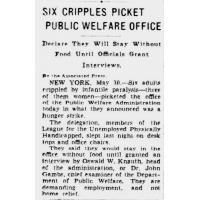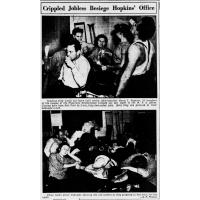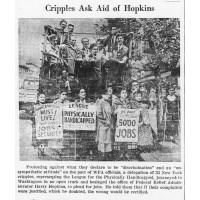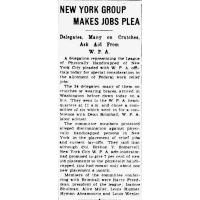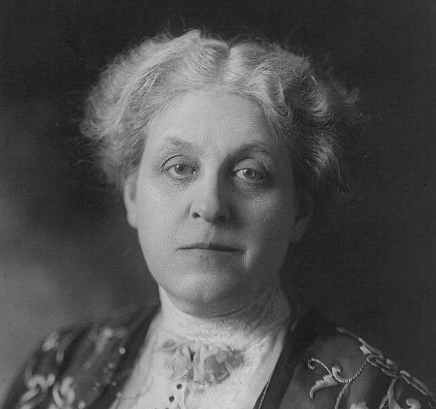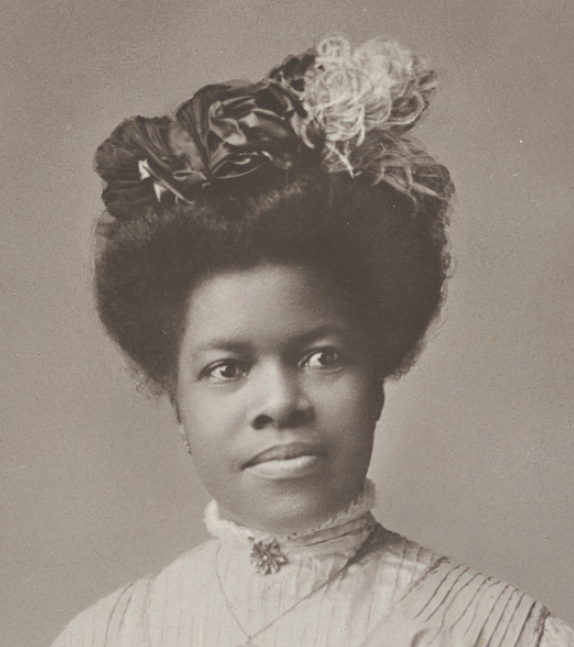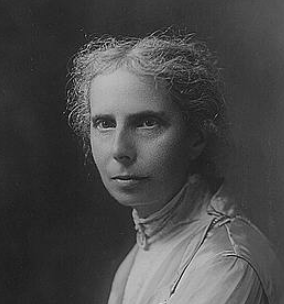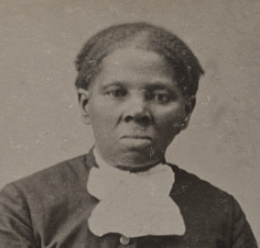This learning activity uses news articles from the 1930s to learn about protests by the New York City group, League of the Physically Handicapped, against the Works Progress Administration (WPA). These articles provide insight into the group’s reasons for protesting, as well as their tactics. Some students might be especially interested in the involvement of women in these protests (in fact, the 1936 sit in was led by a disabled woman). These sources are relevant to the longer history of disabled people and employment as well as disabled people and activism. They can also strengthen lessons on the Great Depression and the New Deal.
*Note: Before starting this exercise, discuss respectful language and historical terms (like crippled) which are considered offensive today. Although the League used “Handicapped” in its title, students should be made aware that the term is considered out-of-date today.
Consider starting with the Observe, Reflect, Question approach to analyze the newspaper articles.
Short background information on the League of the Physically Handicapped is available here. Harry Hopkins led the Works Progress Administration (WPA), Federal Emergency Relief Administration (FERA), Civil Works Administration (CWA).
Potential Discussion Questions
- What surprised you in these articles?
- What tactics did the League of the Physically Handicapped use to try to accomplish their goals?
- What did the League of the Physically Handicapped want?
- Why do you think the League asked for jobs instead of home relief (direct financial aid from the government)?
- What can the Leagues’ demands tell us about Americans’ changing relationship with the government during the Great Depression?
- What assumptions about disabled people did these protesters challenge?
- What conclusions can we draw from the fact that these protests spanned from 1935 to 1937?
- If students have learned about the 1918 Rehabilitation Act: What do these protests tell us about the effectiveness of the post-World War I rehabilitation model for employing disabled people? In other words, what were some of the limits of that model?
---
If you’d like to do a deeper dive on this topic, there are a few longer news articles you could use (I linked them in the teacher notes of “Crippled Jobless Besiege Hopkins’ Office” photo). You could also look at this 10-page “Thesis on Conditions of Physically Handicapped” that the League sent to President Roosevelt and Hopkins in 1936.
---
This source set can be put into conversation with:
-sources on the Rehabilitation Act of 1918 (see album)
-general lessons on the Great Depression (including FDR’s celebration of work and other 1930s protests aimed at the government)
Replies displayed by creation date
Ellie - This is my favorite of your excellent albums to date! I am so happy to see these materials getting wider use.
I would add questions to the inquiry:
- What other groups were staging sit-ins in the 1930s?
- How do these stories change the common narrative that disability activists first began direct action tactics such as sit-ins in the 1970s in the wake of Civil Rights Movement and Antiwar protests?
A tribute to Paul Longmore, San Francisco State University, who conducted the research on the League of the Physically Handicapped that you provide the link to. See the excellent resources at the Longmore Institute.
Let me add that I hope these albums inspire teachers to join the pilot of the free Reform to Equal Rights: K-12 Disability History Curriculum that Emerging America is piloting this fall. We are developing the curriculum with support from a Library of Congress TPS grant.
There is an orientation to the draft curriculum on September 28 from 4-5pm. Sign up here for the orientation and for the pilot.
Testimonials
- I love that there is new info on the site daily!
- I had a wonderful time working with the Library of Congress and learning about all of the resources at my fingertips!
- The TPS Teachers Network has an equal exchange of ideas. You know it's not a place where you're being judged.
- My colleagues post incredibly fine resources and ideas....the caliber of the suggestions and resources make me feel that I take a lot from it. It's a takeaway. And I hope that I can give back as much as I get.
- Going into this school year, I have a fantastic new resource for my own instruction and to share with my colleagues!
- I am very glad that I discovered the TPS Teachers Network through RQI. Great resources can be hard to find out there on the internet!




